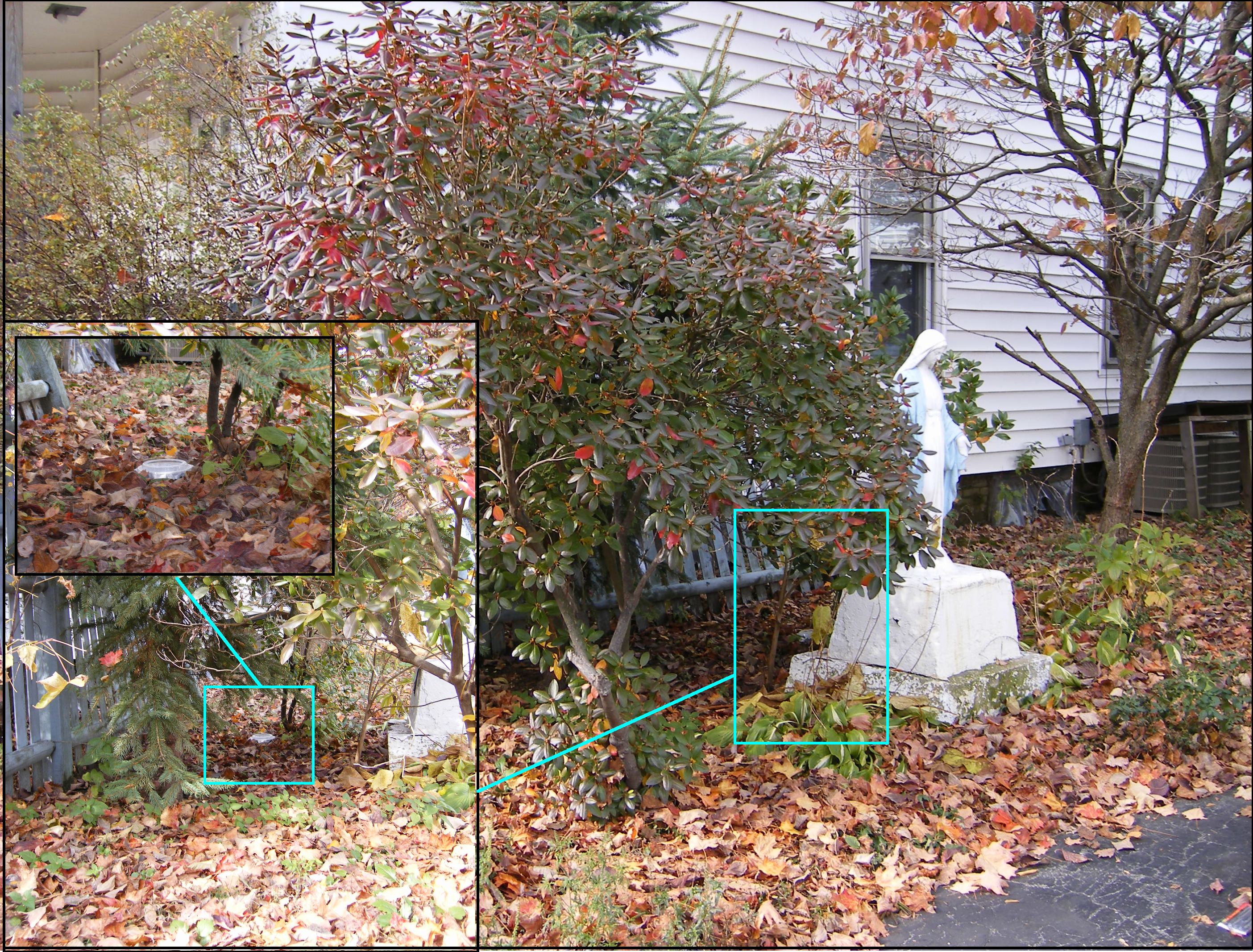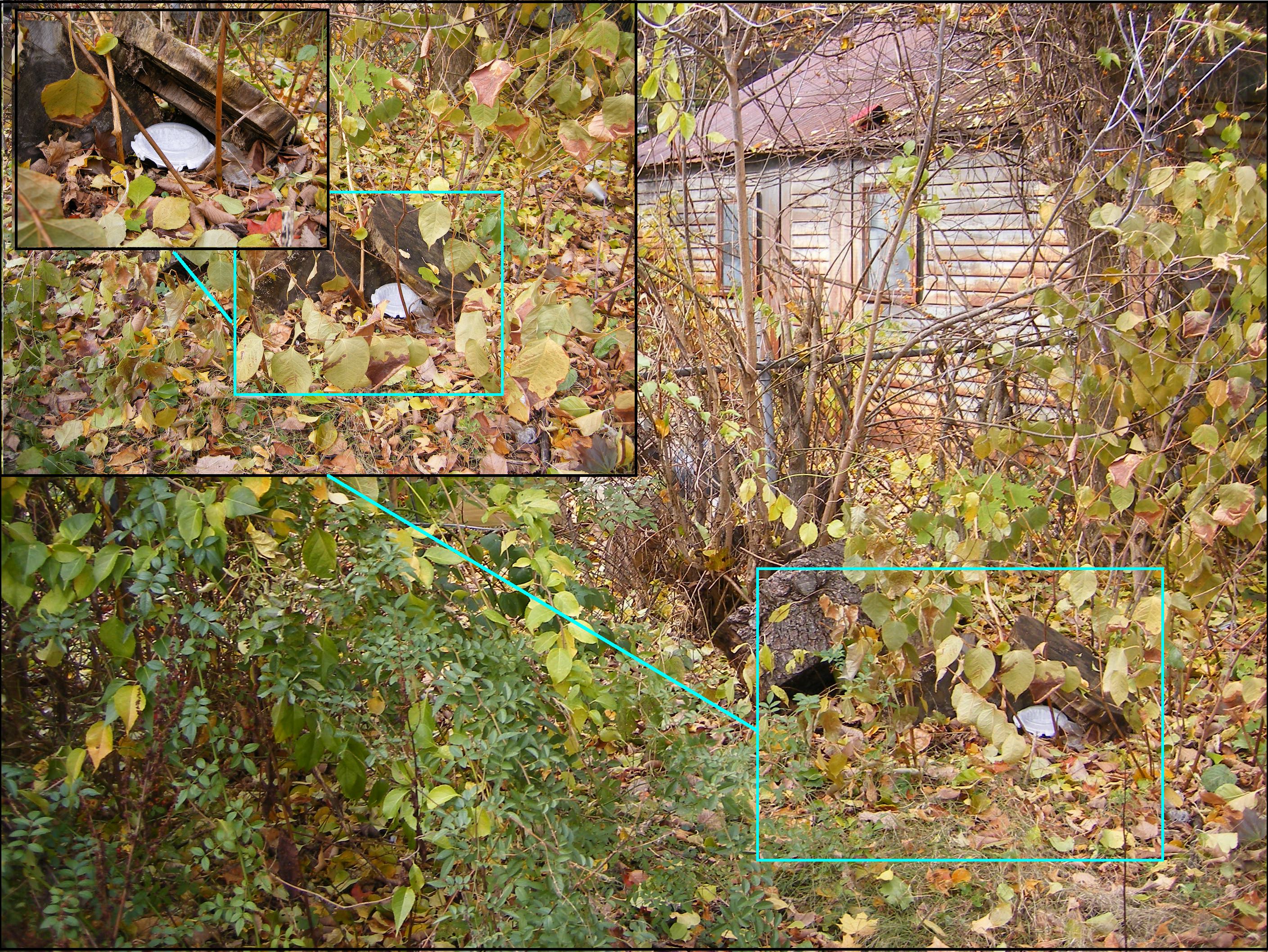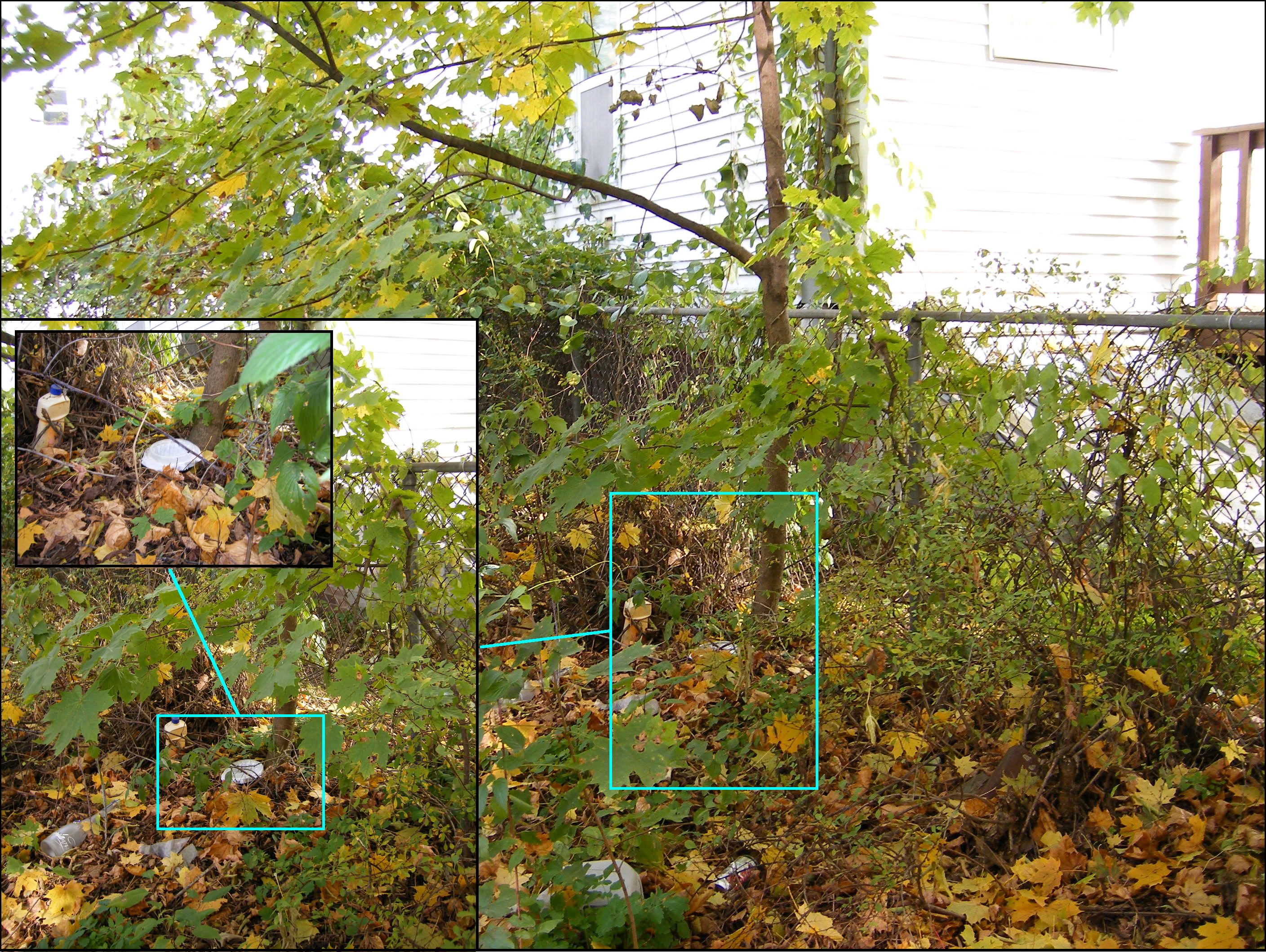
| Damp: When mosquito eggs hatch, young mosquitoes come out in the form of larvae. Mosquito larvae live entirely in water so the eggs must be near water when they hatch. For this reason mosquito females select areas with standing water to lay their eggs, and it is for this reason that traps should be placed in damp sites. If the trap dries out then females won’t want to lay their eggs there. Here are some ways to select a damp site: |  |
 |
Dark: Darkness is
another way of preserving the water in the trap. If an area is
dark, then sunlight cannot hit the water and increase
evaporation. Some good dark areas include underneath porches,
under low branches, and beside fallen trees. |
| Protected: The
mosquito traps are very small and very light and so are vulnerable to
disturbance. Strong winds, heavy rain, animals, and other people
could knock them over if the traps are left in the open. To keep
the traps upright and full of water, choose a site that is protected
from the elements (like wind and rain) and is unlikely to be
encountered by animals or humans. Some good protected areas
include nestled against tree trunks (for example between above-ground
roots), against a large rock, underneath low branches, and against the
side of a house. |
 |